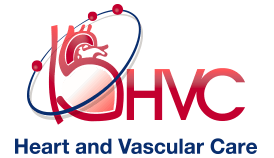Phlebectomy
Ambulatory phlebectomy is used to treat bulging, varicose veins that are close to the surface of the skin. Because the affected vein is removed from the body entirely during the procedure, the associated symptom of bulging veins, is eliminated immediately.

Johns Creek Phlebectomy
Ambulatory phlebectomy is an outpatient procedure typically performed under local anesthesia. It is for large, bulging varicose veins that persist after a refluxing vein has been closed. Tiny incisions are made and the varicose veins are removed. Typically, no stitches are required, and most patients return to work the next day. Heart and Vascular Care has been recognized for offering high quality outpatient vein treatment by the Accreditation Association for Ambulatory Health Care (AAAHC).
The dedicated vein specialist of Heart and Vascular care
Ambulatory phlebectomy is a minimally invasive outpatient procedure utilized to remove symptomatic superficial veins through small, slit-like incisions in the skin. Typically, treated veins are the larger, bulging varicose veins, although smaller veins may also be removed with this procedure.
What does the procedure look like?
Ambulatory phlebectomy is performed under local anesthesia. The dedicated vein specialist of Heart and Vascular Care then marks the veins to be treated. Local anesthesia is then injected into the skin to numb the area scheduled to be treated. The remaining bulging veins are then surgically removed, segment by segment, through small slit-like incisions.

What are the post treatment restrictions?
Patients experience little to no discomfort following the procedure, especially if compression stockings are worn as directed. Patients can walk immediately following the procedure and can carry on with normal daily activities except for strenuous exercise and moderate to heavy lifting.
How should you prepare for treatment?
Potential phlebectomy candidates should have a proper and thorough vein evaluation, which may include a relevant history, physical exam and ultrasound examination. During this exam, your doctor will evaluate your veins, checking for any underlying blood vessel diseases, any heart conditions and any history of blood clots. No shaving can be done of the affected area for 24 hours prior to treat, and you won’t be able to wear any lotion on the day of treatment. You should wear loose clothing, and if the weather allows, shorts would be best.
